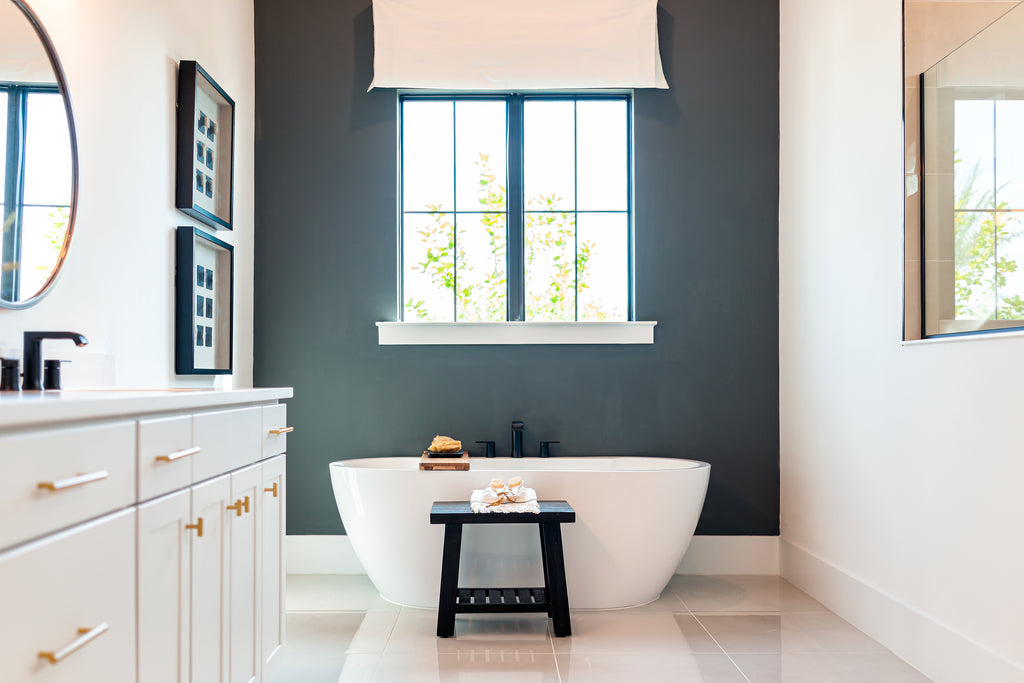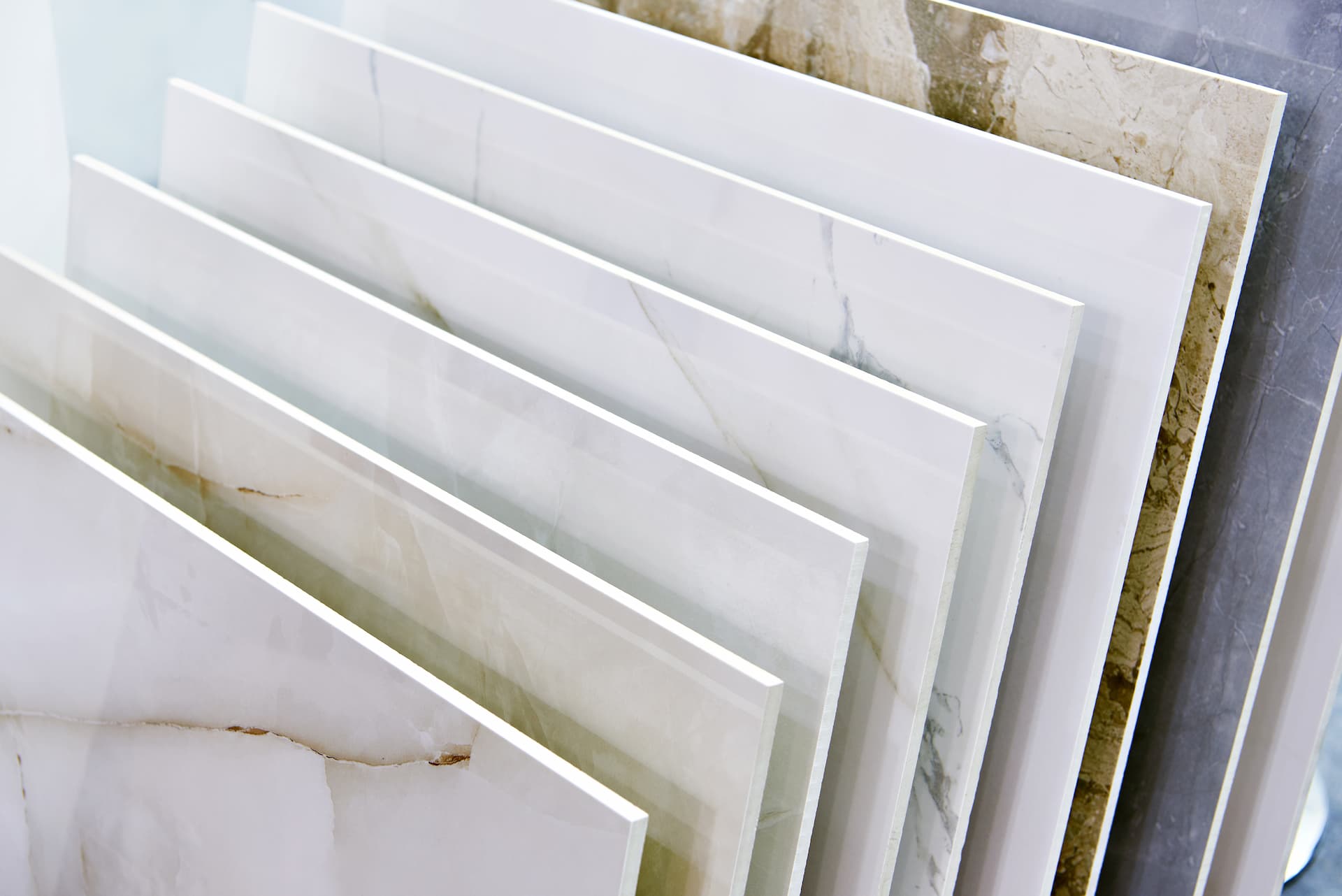Introduction to Tile Materials
Tiles are a staple in many homes and commercial spaces, offering not just utility but also aesthetic appeal. They come in various materials, but porcelain and ceramic tiles are particularly popular due to their durability, ease of cleaning, and wide range of designs. These materials share similarities, such as their clay composition, but possess distinct characteristics that cater to different needs and preferences. This blog post aims to thoroughly explore the differences between porcelain and ceramic tiles. We'll delve into their composition, manufacturing process, practical applications, and maintenance requirements, providing a comprehensive understanding of these commonly used tile materials.

Composition and Manufacturing
The composition and manufacturing process of porcelain and ceramic tiles are key factors that differentiate them. Both are made from clay, but the specific types of clay and firing temperatures vary, leading to distinct end products. Ceramic tiles are crafted from a blend of clays and other natural materials, then fired in a kiln at relatively lower temperatures compared to porcelain. This lower temperature firing results in a tile that is less dense, more porous, and generally softer than porcelain. The variety of clays and lower firing temperatures allow for a broader spectrum of colours and textures in ceramic tiles.
The glazes used in ceramic tile production are less likely to be altered by the firing process, resulting in vibrant and varied finishes. In contrast, porcelain tiles are made from finer, more purified clay and are subjected to much higher firing temperatures. This process yields a tile that is significantly denser, less porous, and more moisture resistant than ceramic tiles. The high firing temperature also imparts greater strength and durability to porcelain tiles, making them suitable for both heavy-duty commercial applications and residential use. These manufacturing differences directly affect the tiles' characteristics and suitability for various applications.
Durability and Strength
Durability and strength are critical considerations when comparing porcelain and ceramic tiles. Porcelain tiles, due to their dense composition and high-temperature firing process, are generally more durable and less prone to chipping and cracking. They can withstand considerable wear and tear, making them ideal for high-traffic areas both indoors and outdoors. This robustness, however, makes porcelain tiles more difficult to cut and handle during installation, which can be a consideration for DIY projects. Ceramic tiles, while also durable, are better suited for areas with moderate to light foot traffic. They work well for interior walls and floors in residential settings. Their comparatively softer nature makes them easier to cut and install. This can be a significant advantage for those looking to undertake tiling projects without professional help, as ceramic tiles can be more forgiving and easier to work with.
Water Resistance and Porosity
Water resistance is a crucial factor, especially in environments like bathrooms, kitchens, and outdoor areas. Porcelain tiles excel in this aspect due to their dense composition and low porosity. They are highly resistant to moisture, making them an excellent choice for areas exposed to water and humidity. Their low water absorption rate means they are less likely to sustain water damage or develop mould and mildew problems. Ceramic tiles, with their higher porosity, need more careful consideration when used in moist environments. Proper glazing and sealing are essential to make them suitable for use in bathrooms, kitchens, and other areas prone to moisture. Regular maintenance and resealing may be necessary to ensure their longevity in such settings.
Aesthetic Differences
The aesthetic appeal of both porcelain and ceramic tiles is vast, offering endless design possibilities. Ceramic tiles provide a wide range of colours, textures, and finishes due to the flexibility afforded by the lower firing temperatures. They can emulate natural stones, woods, and other textures, providing a plethora of design options for various interior styles. Porcelain tiles also come in an array of colours and patterns, with recent advancements allowing for even more realistic imitations of natural materials like stone, wood, and fabric. The technology behind porcelain tile production has evolved to create highly accurate replicas of these materials, often indistinguishable from the real thing at first glance. This ability to mimic other materials with such precision has made porcelain tiles a popular choice for both modern and traditional interiors.
Maintenance and Care
Maintenance and care for porcelain and ceramic tiles are relatively straightforward, but there are nuances to consider. Both tile types can be easily cleaned with regular sweeping and damp mopping. However, due to their higher porosity, ceramic tiles may require more frequent sealing, particularly in high-moisture or high-traffic areas, to prevent stains and water damage. Porcelain tiles, on the other hand, are less prone to staining and generally do not require as much sealing as their ceramic counterparts. Their durability also makes them more resistant to harsher cleaning agents, though such agents are rarely necessary for regular upkeep. These maintenance differences can influence the decision-making process, especially in terms of long-term care and the associated time and effort.
Cost Considerations
The cost is often a decisive factor when choosing between porcelain and ceramic tiles. Porcelain tiles typically come with a higher price tag, reflecting the higher quality materials and more complex manufacturing process. Their superior durability and strength also contribute to their higher cost. However, this investment can be cost-effective in the long run, particularly in high-traffic areas or spaces where longevity and durability are paramount. Ceramic tiles offer a more budget-friendly alternative. They strike a balance between durability, aesthetic appeal, and affordability, making them a favoured option for many homeowners and designers. The lower cost of ceramic tiles can be particularly attractive for larger projects or when working within tight budget constraints.

Installation Differences Between Porcelain and Ceramic Tiles
The installation process of porcelain and ceramic tiles can vary significantly, largely due to their differing physical properties. Porcelain tiles, being denser and harder, require a diamond blade for cutting and often demand more expertise to install correctly. This can make DIY installations more challenging and time-consuming. Additionally, porcelain tiles require a specific type of adhesive due to their low porosity and weight. Ceramic tiles, being softer and easier to cut, are more forgiving during installation. They can be cut with simpler tools and are generally easier to handle, making them a popular choice for DIY enthusiasts. The ease of installation for ceramic tiles can also translate into lower installation costs when hiring professionals.
Thermal and Acoustic Properties
When it comes to thermal and acoustic insulation, porcelain and ceramic tiles behave differently. Porcelain tiles, because of their density, generally offer better thermal insulation and are less likely to change temperature rapidly. This makes them a suitable choice for underfloor heating systems. In terms of sound insulation, porcelain's density can provide some acoustic benefits, though tiles are not typically relied upon for significant soundproofing. Ceramic tiles, being less dense, do not retain heat as well and can feel colder underfoot in low-temperature environments. They also do not offer much in the way of sound insulation. The choice between porcelain and ceramic in contexts where thermal or acoustic properties are a priority should be informed by these characteristics.
Environmental Impact and Sustainability
The environmental impact and sustainability of porcelain and ceramic tiles are aspects worth considering. The manufacturing process of porcelain tiles is more energy-intensive due to the higher firing temperatures required, which could have a greater environmental footprint. Conversely, ceramic tiles require less energy to produce, potentially making them a more eco-friendly option. However, the durability of porcelain tiles means they may not need to be replaced as frequently as ceramic tiles, which could offset their initial environmental impact over time. Consumers increasingly interested in sustainable building practices should weigh these factors when choosing between porcelain and ceramic tiles.
Repair and Replacement Considerations
When considering repair and replacement, porcelain and ceramic tiles present different challenges. Porcelain tiles are more difficult to crack or chip, but if they do get damaged, repairing or replacing them can be more challenging due to their hardness and the need for precise colour and pattern matching. Ceramic tiles, while more prone to damage, are generally easier to repair or replace. The softer material makes it easier to remove and replace individual tiles. Additionally, finding a close match for ceramic tiles can be simpler due to the wider variety of similar styles typically available on the market.

Trend and Style Evolution
The trends and style evolution in porcelain and ceramic tiles reflect changing aesthetic preferences and technological advancements. Porcelain tiles have seen a significant evolution, with modern manufacturing techniques allowing for a vast range of designs, including highly realistic wood, stone, and even metallic finishes. This adaptability makes porcelain tiles a continually popular choice for contemporary and high-end designs. Ceramic tiles have also evolved, with current trends favouring artisanal and handcrafted looks. The versatility in glazes and finishes has allowed ceramic tiles to remain a favourite for those seeking a traditional or rustic aesthetic. Understanding these trends can be crucial for those looking to make a stylistically relevant choice that will remain appealing for years to come.
Impact on Home Resale Value
When considering home renovations or updates, the impact on home resale value is a key consideration. Porcelain and ceramic tiles can both positively influence the value of a home, but in different ways. Porcelain tiles, known for their durability and high-end appearance, can add significant value to a property, especially in areas like kitchens, bathrooms, and entryways. Their ability to withstand heavy traffic and resist moisture makes them an attractive feature for potential buyers. On the other hand, ceramic tiles, with their wide range of designs and colours, can enhance the aesthetic appeal of a home, making it more inviting and appealing to a broader range of buyers. While they may not add as much in terms of durability, the right ceramic tile design can significantly contribute to a home's overall charm and character, potentially increasing its marketability.
Health and Safety Considerations
Health and safety are increasingly important considerations in building materials, and this extends to tile choices. Porcelain and ceramic tiles are both excellent options in terms of health and safety, as they do not harbour allergens, dust, or bacteria, and are easy to clean and maintain. However, the slip resistance of these tiles is a factor that should not be overlooked, especially in areas like bathrooms and kitchens where the risk of slipping is higher. Porcelain tiles often come with a range of slip-resistant options, making them a safer choice for areas prone to moisture. Ceramic tiles can also be slip-resistant, but it's important to specifically look for this feature when selecting tiles for such spaces. Additionally, both types of tiles are fire-resistant, which adds an extra layer of safety in the home. Choosing tiles that prioritise health and safety features can contribute to a safer living environment.
Making the Right Choice
Deciding between porcelain and ceramic tiles involves weighing their differences in composition, durability, water resistance, aesthetics, maintenance needs, and cost. Porcelain tiles, known for their density and robustness, are well-suited for high-traffic and moisture-rich environments. Ceramic tiles, with their diverse design options and ease of installation, are ideal for lighter traffic areas and offer more flexibility in aesthetic choices. Your selection will depend on the specific requirements of your space, your design preferences, and budget considerations. Both porcelain and ceramic tiles have their unique advantages, and understanding these can help you make an informed decision that aligns with your project's needs and your personal style. Contact Hyperion Tiles to find out more about our huge range of tiles.




Share:
Engineered wood flooring vs solid wood
Discover the beauty of porcelain tile flooring for your home